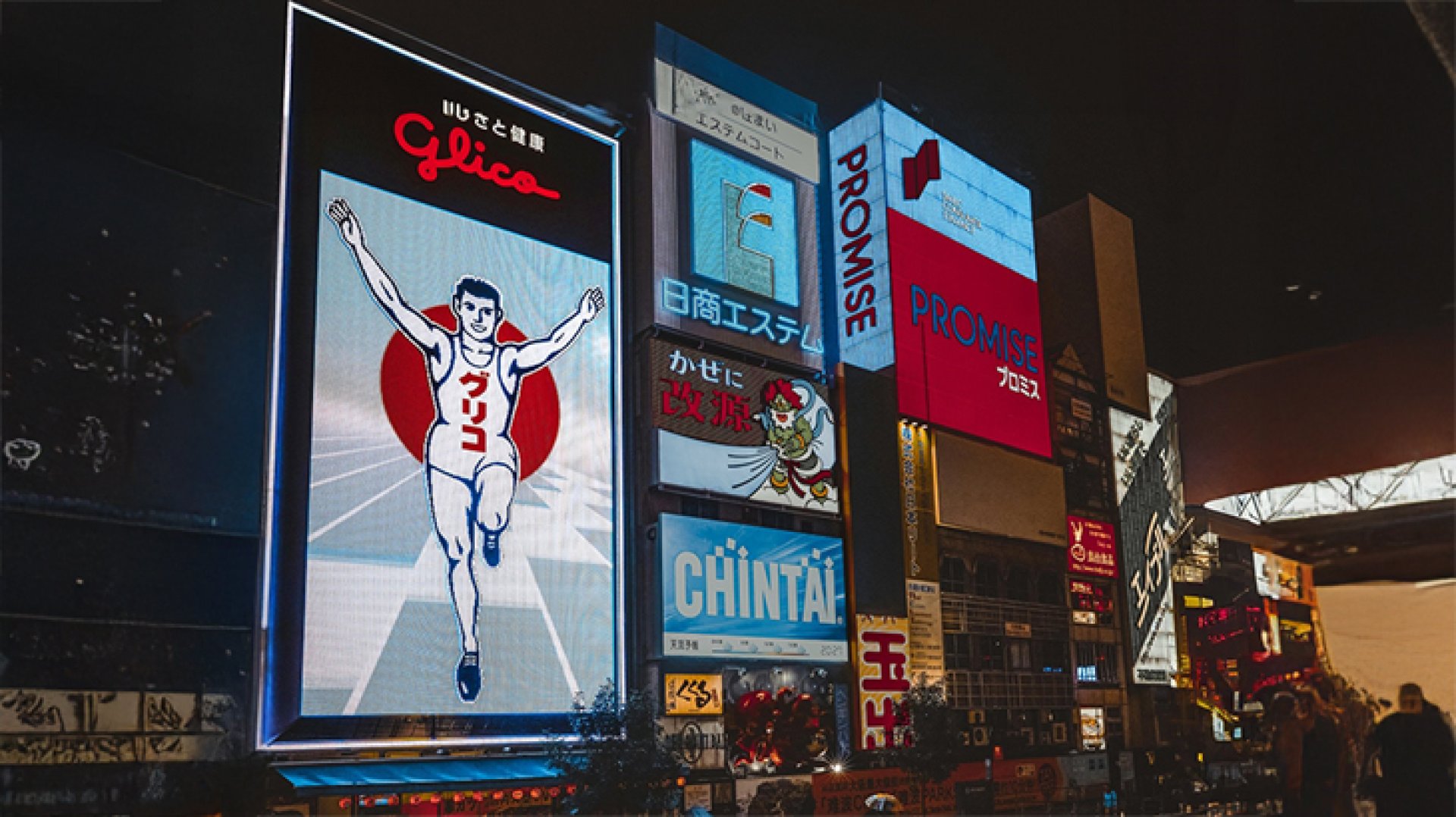Glico

Glico is a giant Japanese confectionery company with origins dating back to the 19th century, founded by Ezaki Glico. The story goes that in 1919, Mr. Ezaki discovered glycogen, a type of carbohydrate, in the broth of boiled oysters. He then had the idea to create a sweet treat using glycogen, as this substance possessed nutritional value that had previously saved his son, who was suffering from typhoid fever. Today, Rimping Supermarket takes you through the legendary story of Glico.
The Beginning with Glico Caramel and Toys in a Box (1921 AD)
In 1921, the company launched its first health-enhancing confectionery product: Glico Caramel. Its distinctive red packaging featured a running man raising both hands as he crossed the finish line. It first went on sale at the Mitsukoshi department store in Osaka and quickly became a huge success, thanks to Ezaki's innovative idea of including popular toys inside the box.
As demand grew, in 1925, Mr. Ezaki expanded his factories to various locations, including Tokyo, Osaka, and Dalian, China. Unfortunately, during World War II, all his factories were destroyed by air raids, leading to the company's dissolution until its relaunch in 1951.
The Revival and the Birth of Pocky (1951 - 1966 AD)
After relaunching the company, Mr. Ezaki commented on the devastation: Even though the war destroyed everything else, the remaining asset was Glico.
In 1951, Mr. Ezaki resumed building new factories in Osaka and Tokyo. Five years later, he founded Ezaki Glico Foods Co., Ltd. and Glico Dairy Co., Ltd. to sell products made from wheat flour. These companies were later merged into Glico Dairy Co., Ltd. in 1966, which then began producing a wide range of products, including almonds, Pretz, Giant Cones, and the most famous of all, Pocky, a chocolate-coated biscuit stick.
Initially, Pocky was marketed as a snack for busy working women. At first, Pocky sticks were fully coated in chocolate, which made them messy to eat. Therefore, the company changed the coating to leave an uncoated end, making them easy to hold without getting messy. This design was inspired by Kushikatsu, a popular Japanese fried skewer dish.
Global Expansion and Iconic Symbols (1970 - Present)
In 1970, the company established Thai Glico Co., Ltd. to expand its customer base across Asia, where it gained immense popularity. It then began expanding into Europe, including Canada and France, and finally, in 2003, it entered the American market.
In 1972, the company opened the Glico Museum in Osaka to celebrate Glico's 50th anniversary. It showcased approximately 4,000 toys from Glico Caramel boxes, along with items related to the founder, Mr. Ezaki. This museum was approved as a modern industrial heritage site by the Ministry of Economy in 2008.
In 1998, the company unveiled the iconic running man billboard in Osaka, known as the Glico Running Man. It features a backdrop of prominent city landmarks such as Osaka Castle, Kaiyukan Aquarium, Osaka Dome, and Tsutenkaku Tower. This symbol represents the company's commitment to progress, perseverance, and victory. Today, this sign still stands tall in the heart of Osaka, becoming a major landmark that many visitors to Japan stop to photograph.
Due to Pocky's undiminished popularity since its launch, in 1999, Glico designated November 11th as Pocky and Pretz Day, or Pokki no hi ポッキーの日 in Japanese. This marketing campaign has been highly successful, gaining widespread recognition both domestically and internationally.
Currently, Glico continues to develop a diverse range of products to meet consumer demands, including new Pocky flavors, ice cream, milk, yogurt, chocolates, biscuits, nutritional supplements, and even savory dishes like curry and cheese.


